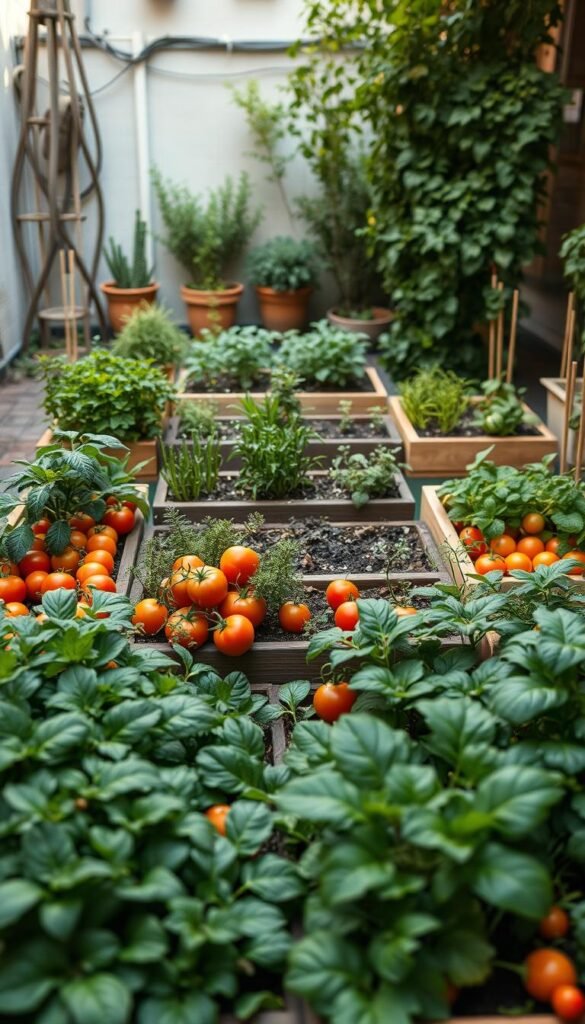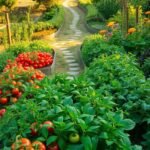Who says you need sprawling land to enjoy homegrown produce? With smart design choices, even postage-stamp patios or narrow balconies can become lush sources of fresh food. This guide reveals how to transform every available inch into a productive green space that works harder than you might imagine.
Discover clever approaches like vertical planters that climb unused walls or multi-level containers that make the most of limited footprints. These strategies let you grow tomatoes, herbs, and leafy greens without sacrificing style. Proper planning turns challenges like awkward corners into opportunities for creative planting arrangements.
We’ll explore practical methods adapted from proven space-saving gardening techniques, including how to select compact varieties and arrange plants for maximum yield. Learn why certain crops thrive in confined conditions while others need more room to spread out.
From selecting the right containers to understanding sunlight patterns, you’ll gain actionable tips for creating a functional layout. Even first-time growers can achieve impressive results by focusing on high-value plants that deliver big flavors from small spaces.
Getting Started with Your Mini Vegetable Garden
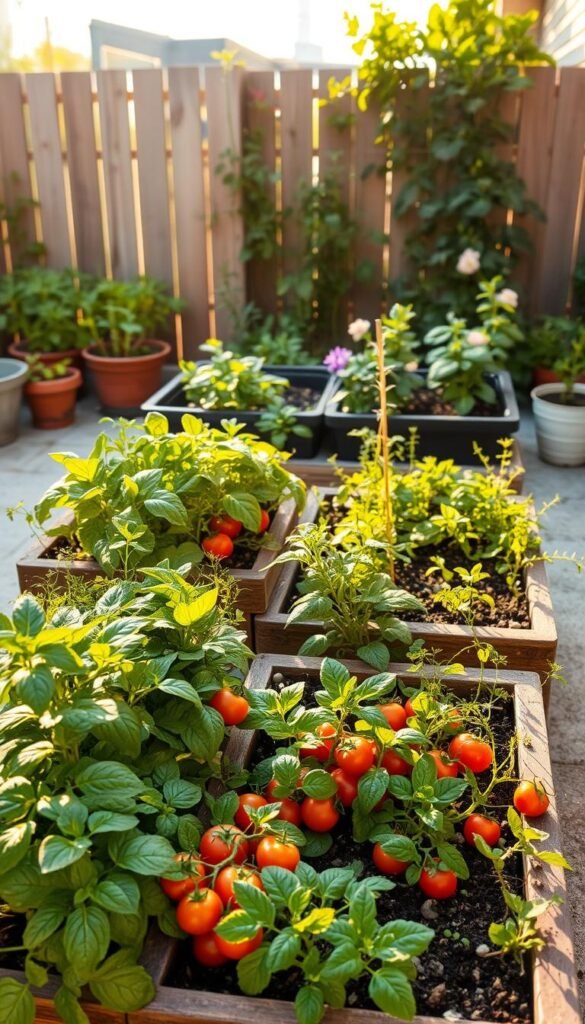
Rethinking underused spaces unlocks surprising growing potential. Begin by sketching your available area on graph paper – even a 4×4 foot plot can yield 10+ crops through smart design.
Planning Your Layout and Space
Measure sun exposure across three days using free apps like Sun Seeker. Leafy greens tolerate partial shade, while tomatoes demand full sun. Follow these density rules:
- Stack vertically: Use wall planters for herbs
- Interplant fast/slow growers: Radishes between broccoli
- Rotate seasonally: Swap summer squash for fall kale
Choosing the Ideal Location
Prioritize spots near water sources – dragging hoses across decks gets old fast. Test drainage by pouring 1 gallon water: If puddles remain after 30 minutes, build raised beds.
| Factor | Best Choice | Alternative |
|---|---|---|
| Sunlight | 6-8 hours direct | Grow lights supplement |
| Accessibility | Within 10 ft of kitchen | Mobile plant caddies |
| Space Usage | Vertical + ground | Tiered plant stands |
Consult your local frost dates using zip code tools. Stagger plantings every 2 weeks for continuous harvests. Remember: Successful gardening starts with thoughtful preparation, not acreage.
Emphasizing Raised Beds for Better Drainage and Soil Control
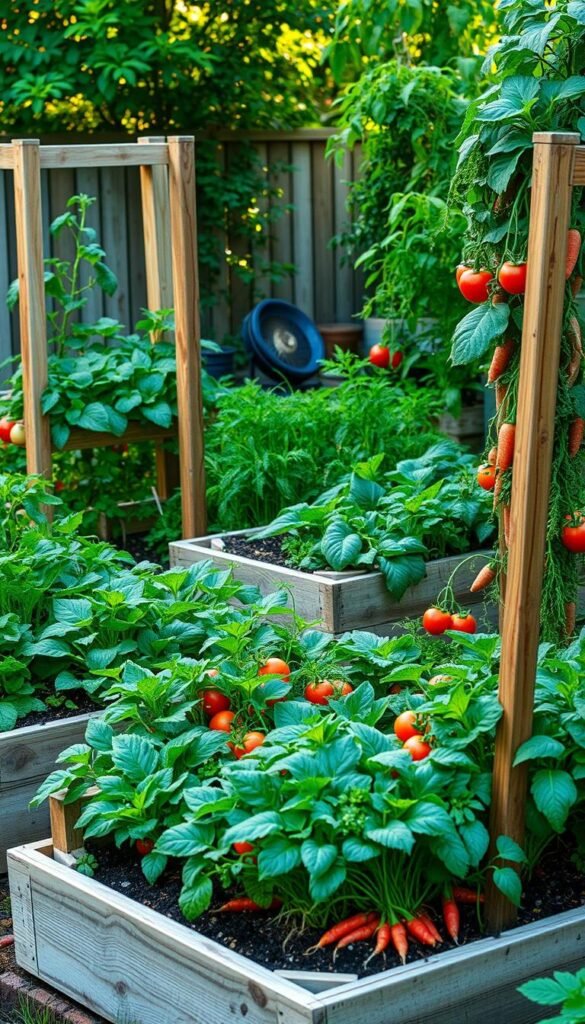
Elevated growing spaces solve multiple challenges in limited areas while boosting productivity. These structured systems let you tailor soil composition and prevent root rot through superior water management – crucial for thriving crops.
Why Elevated Growing Works
Raised beds warm faster in spring, extending your growing season. They prevent soil compaction, letting roots spread freely. You’ll notice fewer weeds since seeds from surrounding ground can’t easily invade your curated soil mix.
For leafy greens like spinach and lettuce, the controlled environment means faster growth. Follow these spacing guidelines:
- Leafy greens: 4 plants per square foot
- Kale/chard: 1 plant per square foot
- Climbing peas: 8 plants with vertical support
Building Your Custom Solution
Choose rot-resistant cedar or galvanized steel for longevity. Concrete blocks offer instant assembly but retain more heat. Always line wooden beds with food-safe sealant to prevent decay.
| Material | Durability | Cost | Best For |
|---|---|---|---|
| Cedar | 7-10 years | $$ | Organic setups |
| Galvanized Steel | 15+ years | $$$ | Modern designs |
| Concrete Blocks | Permanent | $ | Hot climates |
Mix two parts potting soil with one part compost for ideal nutrition. Add perlite if drainage needs improvement. For more urban gardening benefits, consider tiered designs that double your planting area.
Exploring Compact Container and Window Box Gardening
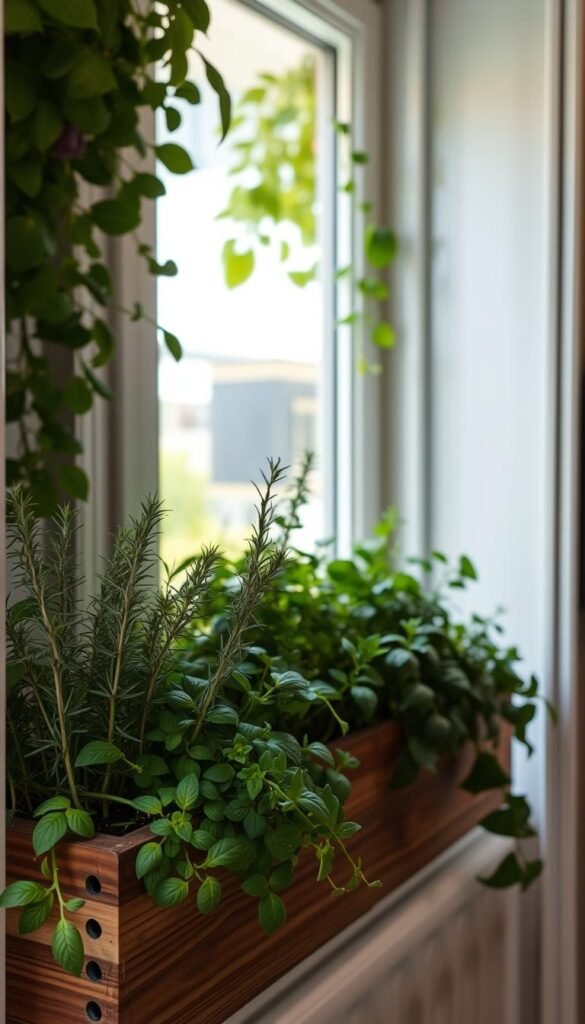
Your kitchen windowsill could become a fresh herb haven. Containers turn overlooked nooks into productive growing zones, letting you harvest ingredients steps from your stove.
Selecting the Right Containers
Match pot sizes to plant needs. Tomatoes demand 18-inch deep containers, while lettuce thrives in 6-inch troughs. Terracotta breathes better for root health, but UV-resistant plastic withstands harsh weather.
Window boxes shine for culinary herbs. Try these flavor-packed varieties:
- Basil – Perfect for caprese salads
- Thyme – Enhances roasted vegetables
- Cilantro – Essential for salsa fresca
| Material | Pros | Cons |
|---|---|---|
| Terracotta | Natural airflow | Heavy when wet |
| Plastic | Lightweight | Less stable |
| Fabric | Root pruning | Frequent watering |
Maximizing Sunlight in Small Spaces
Track sun patterns using free apps like Sun Surveyor. Leafy greens need 4 hours daily, while peppers crave 8+ hours. Roll containers on plant caddies to chase light across patios.
Add reflective surfaces like white walls or aluminum foil behind pots. This trick boosts light exposure by 20% for shaded areas. Always check weight limits before placing filled containers on railings or shelves.
Drainage remains critical – drill extra holes if water pools. A gravel layer prevents soil compaction. With smart container choices, you’ll enjoy garden-fresh flavors without yard space.
Creative Hanging Baskets for Maximizing Your Growing Area
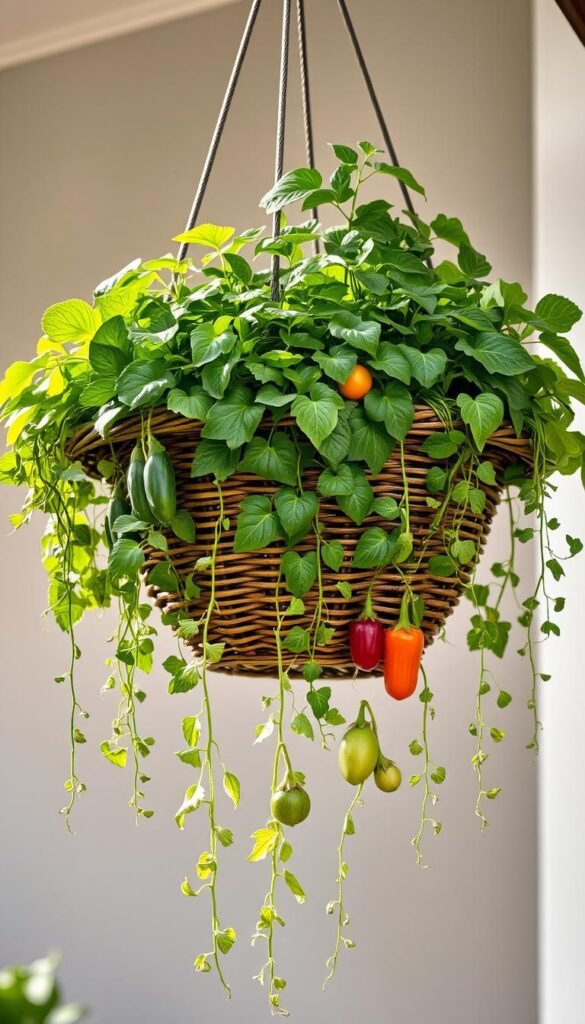
Elevate your harvests—literally—by transforming overlooked airspace into lush food sources. Hanging baskets let you grow fresh ingredients where traditional gardens can’t reach, turning bare walls and ceilings into edible displays.
Start with these essentials:
- Drainage-first design: Punch extra holes if needed, then line with breathable coconut fiber
- Moisture management: Add water-retaining Horti-wool beneath quality potting mix
- Trailing varieties: Choose cascading cherry tomatoes or fragrant thyme that spills over edges
Position baskets where they’ll receive 4-6 hours of sunlight daily. Porch overhangs and shepherd’s hooks work perfectly. The elevated placement naturally deters slugs and rabbits while improving airflow around leaves.
Watering needs extra attention—check soil daily during heatwaves by sticking your finger an inch deep. Pair edible stars like strawberries with ornamental nasturtiums for visual impact. You’ll create living decor that doubles as a snack station.
“Hanging systems let urban growers expand upward when ground space disappears,” notes a recent urban agriculture study. This approach particularly shines for heat-loving plants that benefit from warmer air temperatures at height.
Rotate baskets seasonally: swap summer basil for cool-weather parsley. With proper care, these aerial gardens produce 2-3 harvest cycles annually, making them space-savvy solutions for fresh flavors year-round.
Leveraging Vertical Gardening with Trellises and DIY Pallet Solutions

Turn blank walls into bountiful harvests by growing upward. Vertical systems triple your planting area while keeping pathways clear – perfect for patios where every inch counts. This approach works wonders for vining crops that naturally reach for the sky.
Vertical Structure Ideas
Trellises transform fence lines into productive zones. Try these space-smart options:
- Expandable metal grids for cucumbers
- Bamboo teepees supporting pole beans
- Wall-mounted wire panels for cherry tomatoes
Position structures where they’ll get 6+ hours of sun. Leave 12-inch gaps between climbing plants for air circulation. “Vertical systems increase yield per square foot by 300% compared to traditional rows,” notes a University of Florida agricultural study.
DIY Pallet Garden Guidelines
Repurpose wooden platforms into instant planters – but safety first. Follow these rules:
| Safe Pallets | Unsafe Pallets |
|---|---|
| IPPC “HT” stamp | Blue/painted surfaces |
| Untreated wood | Chemical odors |
Line pallets with landscape fabric before adding soil. Plant shallow-rooted herbs like oregano in top slots, lettuces below. Water gently – vertical setups dry faster than ground plots.
Stagger plant heights to prevent shading. Place taller trellises north of shorter pots to maximize light exposure. With smart vertical planning, you’ll harvest basketfuls from what was once dead space.
Designing a Mixed Vegetable Garden for Companion Planting
Transform your limited growing area into a thriving ecosystem where plants work together like neighbors sharing tools. Companion planting lets you grow more in less space while naturally deterring pests – no chemicals needed. Imagine basil shielding tomatoes from hornworms while marigolds repel root-knot nematodes underground.
Interplanting Strategies
Pair deep-rooted veggies with shallow herbs to maximize soil layers. Try radishes between carrots – the quick-growing roots break soil for their slower neighbors. Flowers like nasturtiums pull double duty, adding color while trapping aphids away from your greens.
Rotate crops seasonally using proven companion plant pairings for continuous harvests. Plant garlic near peppers to prevent fungal issues, or let dill attract pollinators to cucumber vines. These partnerships create living pest control that improves yearly.
Mix textures and heights for visual appeal – frilly lettuce under trellised beans, purple basil beside golden marigolds. You’ll create a productive space that delights the senses while feeding your kitchen. Smart pairings mean fewer problems and more flavorful harvests from every square foot.
